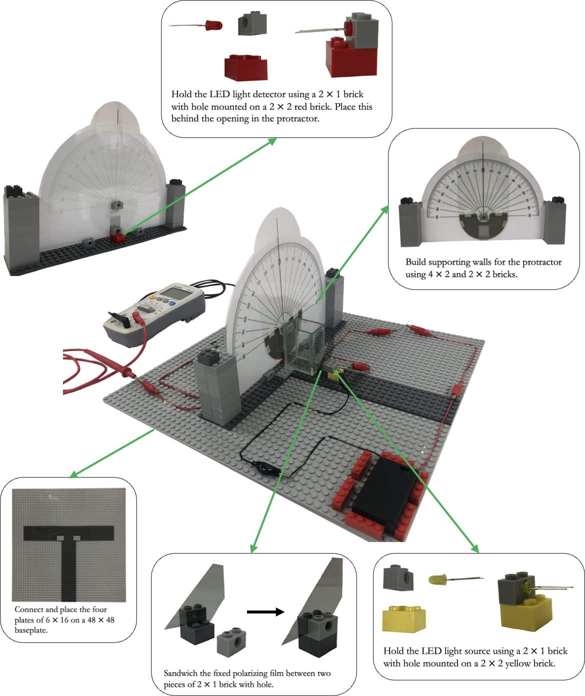A physics student built a polarimeter using LEGO.
The researcher aimed to analyze the purity of ascorbic acid from two brands using polarimetry with tools available in an educational setting. It is challenging to imagine commercial instruments in a school classroom or laboratory, as monitoring optically active substances by determining their angle of rotation is a complex optical technology. Consequently, the devices used in the pharmaceutical, chemical, cosmetic, and food industries are costly.
A simple alternative proposed by the student cost the creators only 150 dollars, whereas manual polarimeters exceed 1200 dollars, and laboratory models are ten times more expensive. The foundation of the device was a square base plate from "Lego" measuring 48 by 48, onto which the main components were placed.
To create templates, for instance, the researcher used a paper model of a protractor and laminated it; similarly, he printed designs for the stationary and rotating polarizing films on paper and then transferred them onto the linear polarization film. The student connected the parts with tape and fasteners from the construction set, having first made holes in the plastic. He then attached a glass cuvette containing a transparent sample to the polarimeter, along with LEDs.

The experiment involved testing the device on samples of ascorbic acid from two over-the-counter pharmaceutical brands and then comparing the results with theoretical values.
The findings indicated that in one case, the angle of rotation in polarimetry (the rotation of linearly polarized light as it passes through optically active chemicals to the right or left) fell within the acceptable range, while in the other case, significant deviations were observed. This, in turn, suggests a high purity of ascorbic acid from one brand and possible impurities in the substance from the second manufacturer.
The conclusions confirm the data regarding melting temperatures, which must also be considered for a reliable assessment of substance purity. Overall, the homemade polarimeter demonstrated effectiveness in practical application, meaning it can be used for educational purposes.
The research was published in the Journal of Physics: Conference Series.